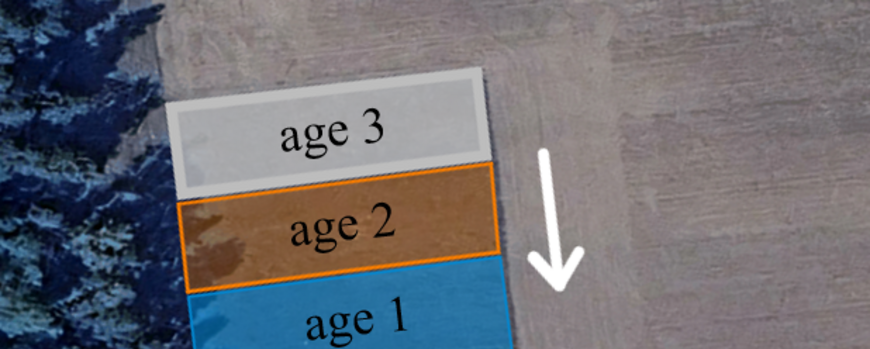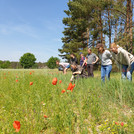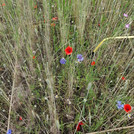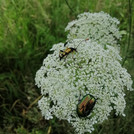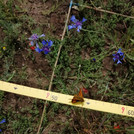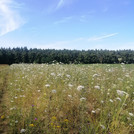Linde Wildflower Experiment
The Linde Wildflower Experiment is a close collaboration between two research groups: Our group focuses on the plant communities within wildflower strips and the food resources they provide for insects in general, and for pollinators in particular. The Animal Ecology Group at the University of Potsdam investigates the response of ground-dwelling and pollinator insects to these vegetation structures.
While wildflower strips are typically sown with a diverse mix of arable plant species, additional diversity often emerges from the soil seed bank, contributing longer-lived species and adding to the structural and temporal complexity of the vegetation. For pollinators, the timing of flowering is key: if all plants flower at once, as is common shortly after sowing, this can lead to seasonal gaps in nectar and pollen availability. Sustained flowering throughout the season is essential to support flying insects over time.
In this experiment which is situated at the Linde Research Station in the Western Havel Area (Brandenburg, Germany), we also aim to disentangle the effects of wildflower strip age and shape. Specifically, we compare conventional, static strips – typically long and narrow, with extended boundaries to both the field margin and the crop area –with the rolling wildflower blocks, which have a shorter boundary and shift across the field over time. This allows us to investigate not only how vegetation changes with time (succession), but also how different spatial layouts influence biodiversity, particularly through edge and margin effects.
Mission
The Linde Wildflower Experiment aims to understand how the age and spatial design of wildflower strips influence plant communities and the insect biodiversity they support in agricultural landscapes.
Project details
Aims | Evaluate the effects of wildflower strip age and shape, understand plant community development, link plant traits and soil factors to biodiversity patterns, and improve habitat design to better support insect populations. |
Approach | We study how vegetation structure and composition develop in wildflower elements of different ages and shapes. Plant species richness, abundance, and flowering intensity are recorded monthly during the main vegetation period, along spatial gradients within the wildflower strips and blocks. We also analyse soil properties to explore how environmental variation influences plant communities and the resources they provide for insects. |
Persons involved
| Principal Investigators
Prof. Dr. Jana Eccard, Animal Ecology Group (https://www.uni-potsdam.de/en/ibb-tieroekologie/websites-of-staff/prof-dr-jana-anja-eccard)
PostDoc Dr. Liana Kindermann (https://www.uni-potsdam.de/de/ibb-biodiversitaet/members/liana-kindermann)
PhD student Vera Kaunath, Animal Ecology Group (https://www.uni-potsdam.de/en/ibb-tieroekologie/team/vera-kaunath)
Master students
|
Funding | Zwillenberg-Tietz-Stiftung (https://zwillenberg-tietz-stiftung.de/en/linde-wildflower-experiment/)
|
Outreach | Eccard, J. A. 2022. Can rolling composite wildflower blocks increase biodiversity in agricultural landscapes better than wildflowers strips? Journal of Applied Ecology 59:1172-1177. https://doi.org/10.1111/1365-2664.14147
|

